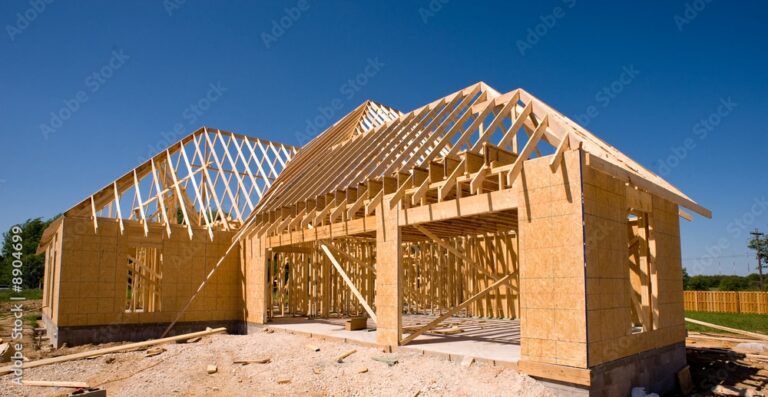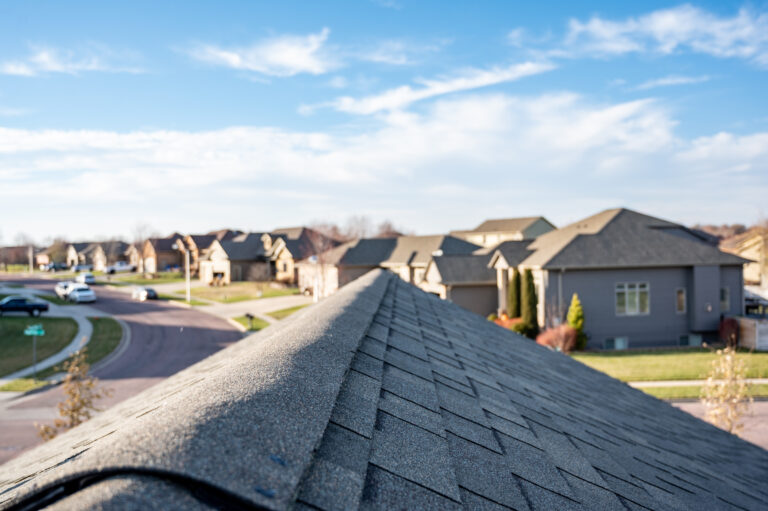Roofing underlayment serves a pivotal function in your home’s roof architecture. This understated hero of your roofing structure presents a crucial secondary defense against the elements that could otherwise penetrate your roofing material, especially harmful when water ingress is at stake.

Understanding Roofing Underlayment: Its Definition and Purpose
Roofing underlayment, as used by top professionals like Andes Roofing, is a water-resistant barrier installed directly onto your roof deck. This component’s primary purpose is to serve as a plan B for your roof’s initial line of defense against weather — your roofing material. When rain, wind, or snow threatens your home, the underlayment stands as a bulwark to prevent moisture from touching the roof deck.
In regions with often adverse weather conditions, like Louisville KY, its water-resistant nature is indispensable. Besides offering critical protection against moisture, roofing underlayment also provides:
- Protection during construction: It safeguards the roof deck during the construction phase before the final roofing material is installed.
- A smooth, even surface: It helps to create a flat, clean surface for the roofing material, thus enhancing the roof’s overall aesthetic appeal.
- Extra insulation: It adds an extra layer of insulation to your home, keeping it warmer in winter and cooler in summer.
Varieties of Roofing Underlayment
Underlayment is not a one-size-fits-all product, and different types serve various needs. The three main types of underlayment are:
- Asphalt-Saturated Felt Underlayment: Traditionally known as “felt paper,” this underlayment is water-resistant, not waterproof. It’s made from organic or fiberglass substrate saturated with asphalt for water resistance.
- Synthetic Underlayment: Made from polymers, this underlayment is stronger, lighter, and more tear-resistant than asphalt-saturated felt.
- Rubberized Asphalt Underlayment: While this underlayment is more costly, it offers superior waterproofing due to its high asphalt and rubber polymer content.
The Choice of Underlayment: Factors to Consider
When choosing the underlayment for your home, Andes Roofing, one of the leading Louisville roofing companies, suggests considering the following:
- Roofing Material: Different roofing materials require different underlayment types. For example, metal roofs tend to condensate, requiring a self-adhering underlayment that can handle high temperatures.
- Climate: Areas with high winds or heavy rain and snow require a more durable and waterproof underlayment.
- Slope of the Roof: Roofs with a lower slope tend to collect water, thus requiring a more waterproof underlayment.
The Installation of Roofing Underlayment: A Crucial Process
The installation of roofing underlayment demands expertise and precision, which Andes Roofing, a trusted roof repair Louisville KY company, can provide. The process begins with thoroughly cleaning and drying the roofing deck. Then, the underlayment is rolled out horizontally, starting from the bottom of the roof and fastened to the deck using roofing nails. Overlaps of at least four inches on the sides and two inches on the ends are standard to ensure no gaps for water to seep through.
The Life Expectancy of Roofing Underlayment
The lifespan of your roofing underlayment depends on several factors, including the quality of the underlayment, the roofing material, and the climate. High-quality underlayment, when correctly installed, can last up to 25 years or longer, often matching the lifespan of the roofing material itself.
The Underlayment’s Impact on Your Roof’s Warranty
The choice and installation of roofing underlayment can significantly impact the warranty of your roof. Some manufacturers’ warranties require specific types of underlayment, and incorrect installation can void these warranties. Therefore, it is essential to review the warranty requirements before selecting and installing your underlayment.
Ensuring the Best for Your Home: Entrust Your Roof to Experts
Given the importance of roofing underlayment, it’s vital to entrust its installation to experts. By selecting high-quality underlayment and ensuring it is correctly installed, you can extend the life of your roof, maintain the interior of your home, and potentially save thousands of dollars in repair costs.
Roofing underlayment’s role cannot be understated. It is the unsung hero of your roofing system, silently providing protection, improving insulation, and contributing to the lifespan of your roof. Make the right choice of underlayment and trust expert hands with its installation to ensure your home’s ultimate protection.






